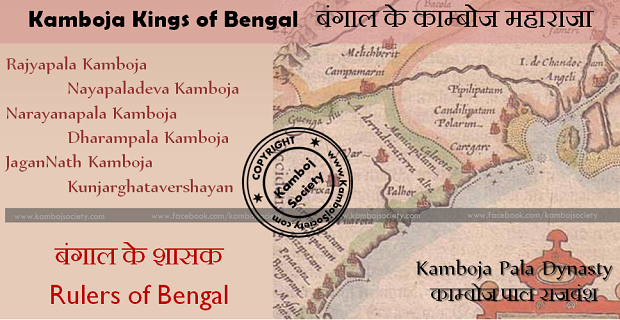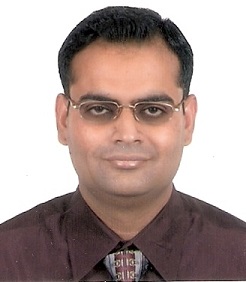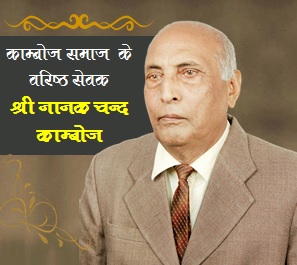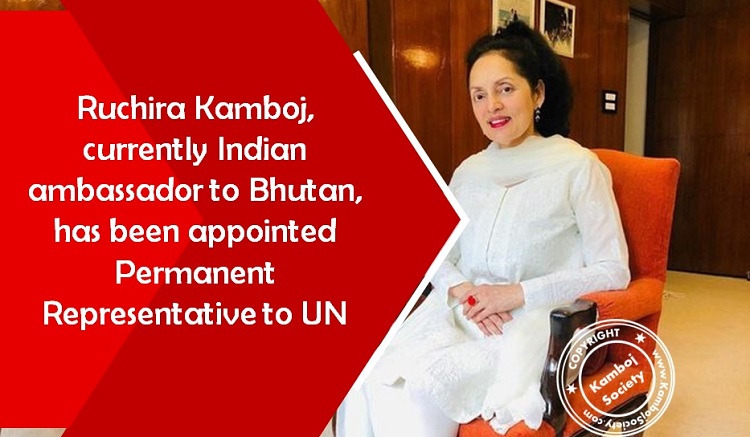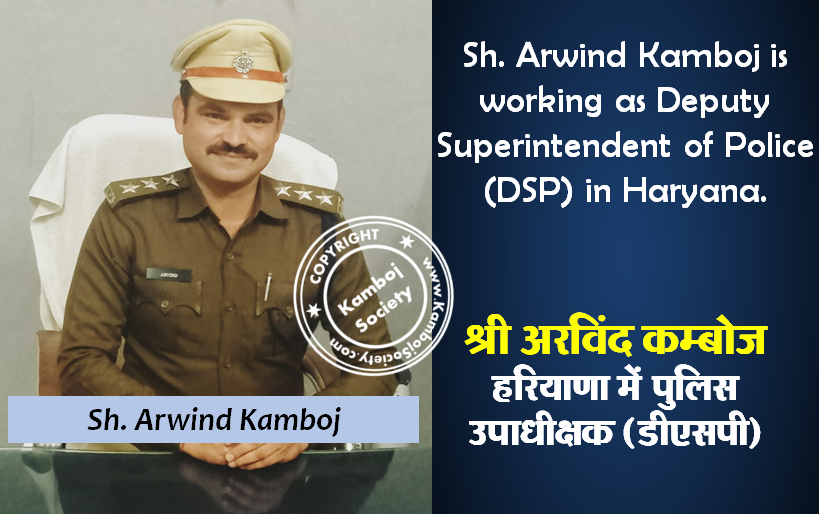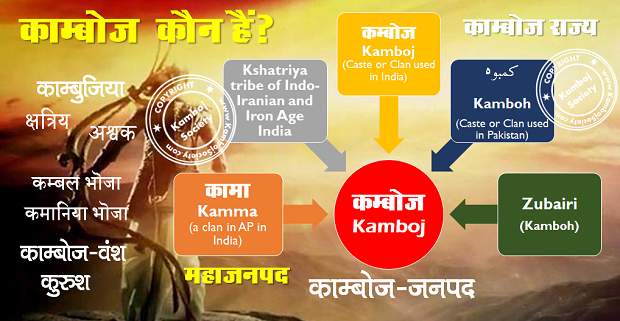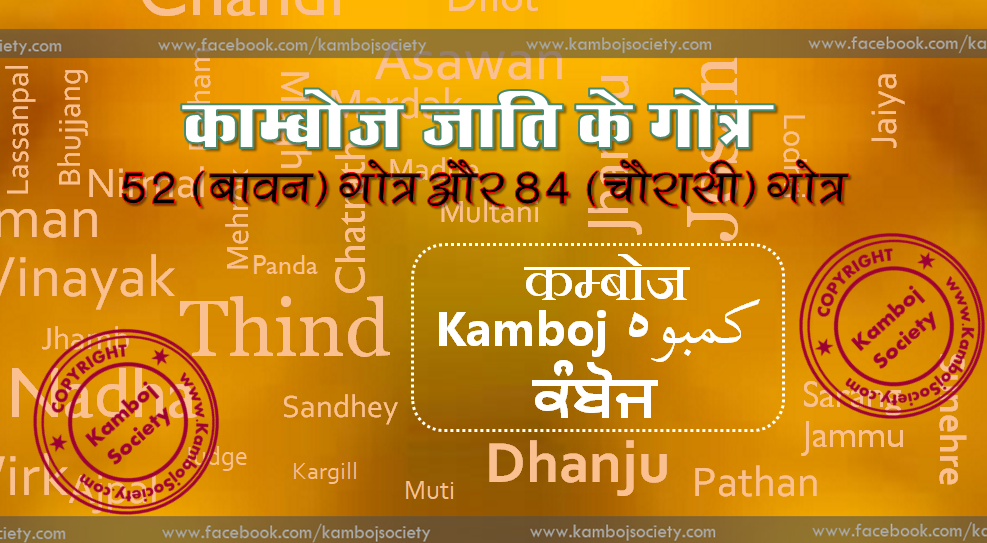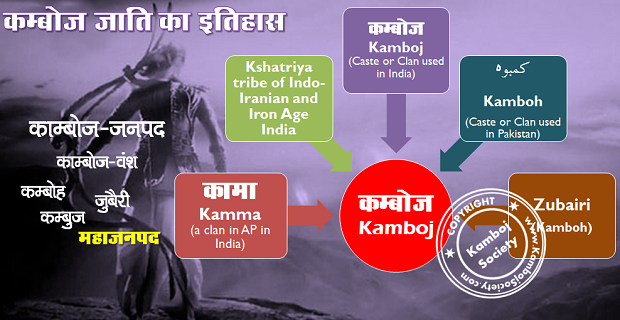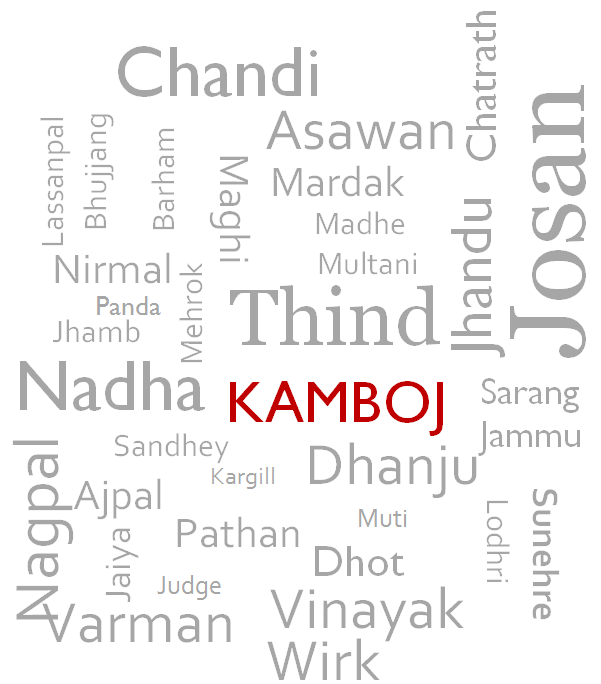A third branch of these Central Asian Kambojas seems to have migrated eastwards along the Himalayan foothills, hence their notice in the chronicles of Tibet (Kam-po-ji/Kam-po-ce) and Nepal (Kambojadesa). Fifth century CE [[Brahma Purana]] (53/16) mentions Kambojas with Pragjyotisas and Tamraliptikas. Sasanavamsa (P.T.S., pp 64-65, 83 etc) also attests the Kambojas in/around Burma. They were probably a section of those Kambojas who figure in history of Bengal. They had made an unsuccessful bid to conquer Gauda during the reign of king Devapala. A latter attempt of Kambojas was crowned with success and they deprived the Palas of the suzerainty over Gauda and set up one of their chiefs as king (History of India, p 399, Dr V. A. Smith)
Rajyapala, Narayanapala, Nayapala, Dharamapala and Gaudapati, also known as Kunjarghatavarshayan, are the known Kamboja kings who ruled in north-east Bengal. Kamboja rule in north-east Bengal is attested from Dinajpore Pillar Inscription as well as from Irda Tamrapatra inscriptio found in Irda, District Balasor, [[Orissa]], in 1931 (Edited/published by Dr N. G. Majumdar, 1934).
Irda Tamrapatra was found in Irda, Balasore (Orissa) in 1930 and was edited in 1934 by Dr N. G. Majumdar (E.I. Vol XXII., 1934, pp 150-58). Irda Tamrapatra describe generation after generation of kAmbojavaMshatilaka kings of Irda Tamra Patra. Following are the WELL-KNOWN KAMBOJA KINGS of Bengal referenced in the Irda Tamrapara [Provided the Pala Dynasty of Bengal and Pala Kamboja Dynasty of Bengal are two Separate Dynasties*]. Note the long Imperial titles which these Kamboja kings Rajyapala and Nayapala had assumed for themselves.
These were the Kamboja Kings of Bengal:- Rajyapala Kamboja
- Nayapaladeva Kamboja
- Narayanapala Kamboja
- Dharampala Kamboja
- JaganNath Kamboja
- Kunjarghatavershayan
RAjyapAla Kamboja
Kamboja.vamshatilaka.Paramasaugata mahArAjAdhirAja parameshvara paramabhaTTAraka rAjyapAla– (Irda Tamarapatra; Epi. Indica, XXII, 1933-34, pp 150-58)
NaYapAladeva Kamboja
parameshvara paramabhaTTAraka mahArAjAdhirAja naYapAladeva– (Irda Tamarapatra)
NArAYaNapAla Kamboja
In fact, North and East Bengal saw the rise of the kAmboja kings centered at priYaGgu, which is still unidentified. It is not clear where they came from. The confusing part is there is a parameshvara paramabhaTTAraka mahArAjAdhirAja naYapAladeva, brother of previous king nArAYaNapAla, son of kAmbojavaMshatilaka paramasaugata mahArAjAdhirAja parameshvara paramabhaTTAraka rAjyapAla and his wife bhAgyadevI. Because of the coincidence in name, it is conjectured by some that the pAla rAjyapAla's mother was a kAmboja princess, and these kAmboja rulers are just a branch of the pAla dynasty. On the other hand, they may be the kambojas from north west India from where the pAlas used to get their horses, the tibetans, or the koca tribe (the related tribe mleca may be the origin of the term mleccha). There is also a south Indian reference to a kAmboja king gifting a stone to rAjendra cola for the naTarAja temple. Other references to kambojas abound in the ancient literature, and this may have been just the expansion of an Indo-European tribe with both Persian and Indic affinity from their homeland in the Afganisthan-Turkistan (Some relate their name to Cambyses of the Achaemenian empire of early 6th cent BC) region along the foothills of the Himalayas towards Bengal, along the coast to Gujarat, to Ceylon, and maybe to Cambodia.
Dharampala Kamboja
This Kamboja king is said to have ruled in Dandbhukti in the early 11th c A.D. King Dharampala had sought the help of Cola king, Rajinder Cola, against the so-called Pala kings of Bengal. Probably, this Kamboja king (Dharampala) had presented a precious gift to king Chola and his reference is found in Chindamram Inscriptions. (cf: Ancient Kamboja, People & the Country, p 333-335, Dr J. L. Kamboj; cf: Decline of kingdom of Magdha, p 413, f.n. 2; Sinha B. P; Also see: Some Hisrorical Aspects of the Inscriptions of Bengal, p 379-80, B. C. Sen).
cf: “…There is also a south Indian reference to a kAmboja king gifting a stone to rAjendra cola for the naTarAja temple” (See also website produced above).
Dharmapala was succeeded by his son Devepala, who not only maintained his father's extensive empire but also extended his territory from whole of northern India from Kashmir to Assam and from the Himalayas to the Viddhya mountains. After Devapala's death, the decline of the Pala dynasty in North India was rapid. Northern Bengal was first invaded and annexed by the king of Pratihara, Mahendrapala, sometime before 898 AD and later northern and western Bengal were annexed by the Kambojas, a powerful hill tribe from the north or the east. The Palas also lost hold over east and south of Bengal. During the second half of the 10th century AD, a Buddhist king named Kantideva broke off Harikela (Sylhet) from the Pala kingdom while the Chandra rulers took over Samatata as an independent kingdom.
https://www.bongoz.com/south_asia/eastern_himalayan_culture.htm
The Chola inscription (Tirumulai inscription), which records Rajendra Chola's invasion of Bengal some time in between 1021 and 1024 AD, throws further light on the condition of Bengal. The inscription records that after conquering Orissa the Chola general seized Dandabhukti after having destroyed Dharmapala (possibly belonging to the Kamboja line) and reached southern Radha where he met Ranashura. Then the army reached Vangaladesha, where the rainwater never stopped, and Govindachandra fled having descended from his elephant and subsequently they met Mahipala in northern Radha. The narration of the Chola inscription clearly places Govindachandra in south-eastern Bengal and Mahipala is northern and western Bengal.
For DHARAMAPALA being a KAMBOJA king, see the following references also:
[Ref: Decline of Kingdom of Magadha, p 413, fn 2, Dr B. P. Sinha; Ancient Kamboja, Peopleand the Country, 1981, p 333, 334, 316, 338, Dr Kamboj]
JaganNath Kamboja
Interestingly, we find yet another Kamboja king of Bengal, referenced as Jagan Nath in Sanskrit MSS. Kamboja king Jagan Nath (16th c AD), had patronized a Brahman Scholar Sura Mishra, who had composed ‘Jagannathaprakasa', a Smriti Granth in honor of this Kamboja king Jagan Nath of 16th c AD in Bengal.
Ashesh Kamboja-kula-vantsa shri Jagana Nath iti parsidh:// akaryad Dharamanibandhmetam dhradhipeayarkabale nareshe//– (Dr R. L. Mitra, Notices of Sanskrit MSS., Vol V, No 1790; Ancient Kamboja.., 1981, p 208, Dr Kamboj)
Kunjarghatavaeshayan Kamboja
Kunjarghatavaeshayan, who finds mention in the Dinajpore Pillar Inscriptions. Kunjarghatavershayan was probably his personal name. This king had assumed the title of Gaudapati or Lord of Bihar. KambojaNavyen Gaudapati, Kunjarghatavershayanh (=Gaudapati=Lord of Bihar)
Durvarari varuthini paramthaney danai ch vidhyadhar: (1) Sa nanda yama yasa gunh ganh: Gram graho gyatai (2) KAMBOJA-NAVYEN GAUDPATINA te nendu moley ryam (3) Parsado nirmaya kunjarghattavarsheyanh bhu bhushanh.”(4)–(WORDING OF DINAJPORE PILLAR INSCRIPTIONS)
TRANSLATION:
The Kamboja Raja was great warrior like Durga (Chandi) in war; great charity-giver like vidhyadharas, in making liberal charitable donations. His honor and glory was sung and praised in the whole of India as well as in the Swargaloka (heaven). The Kamboja king had wiped out all his enemies from this earth. This pillars inscription is being raised to commemorate the splendrous victory by the Kamboja king over Gauda country. He has also raised a magnificent temple in honor of lord Shiva. In so doing, the Kamboja king has made him so dear and popular to his subjects as the ornaments are dear to the women.”Dinajpore Pillar inscription refers to a Kamboja king who is described as '''Kambojanvayjen Gaudapati'''.. i.e. the lord of Gauda born in a Kamboja family (Indian Antiquary, I, 1872, pp 127ff, 195ff, 227 ff; Journal of Royal Society of Bengal, II, 1911, pp 615-19).
Some startling facts about Pala kings and Kamboja kings of Bengal!
- The Kamboja kings Rajyapala, Narayana and Nayapala of Kamboja Dynasty have their namesakes in Pala kings of Pala Dynasty of Bengal also,
- These Kamboja kings and their counterparts in Pala Dynasty belong to the same era,
- Both the Kamboja kings and the Pala kings are known to have assumed exactly similar imperial titles i.e. PARAMESHEVARA, PARAMABHATTACHARYA AND MAHARAJADHIRAJA, and still further,
- The name of the queen of Kamboja king Rajayapala and that of his seemly contemporary king Rajyapala of Pala Dynasty are also identical....i.e. both have the personal name ‘Bhagyadevi',
- Both the Kamboja kings as well as the Pala kings use ‘Pala' as the last part in their names,
- Both the Kamboja kings and the Pala kings are documented to have similar religios beliefs,
- The script and language of Irda Tamrapatra, and Dinajpur pillar inscriptions (Kamboja kings) and that of numerous Epigraphic inscriptions of the so-called Pala kings are surprisingly identical.
Based on above startling revelations & similarities, some scholars have gone to the extent of stating that the Kamboja dynasty and the Pala Dynasty of Bengal are one and the same ruling dynasty. Some of the Bengalese scholars have stated that all Pala kings of Bengal, in fact, come from the Kamboja family. Or in other words, the ‘ethnicity' or ‘vamsa' or ‘clan' of the Pala kings of Bengal has also been thought to be KAMBOJA, and that both Pala dynasty & Kamboja dynasty belong to one and the same family i. e. Kamboja family.
Still another important and very interesting fact to be noted here is that in all the numerous Epigraphic and Tamrapatra inscriptions of the Pala kings, the so-called PALA KINGS have nowhere revealed as to WHAT ETHNICITY/TRIBAL BACKGROUND they came from!!!!!!!. Speaking matter-of-factly, HISTORY DOES NOT KNOW AT ALL about the ETHNICITY of the PALA KINGS of Bengal. But the history does reveal to us the “tribal background” of the Kambojas of Bengal as well as it also furnishes other startling information as in para (1) to (7) above.
Thus indeed there is a strong probability that the Pala dynasty of Bengal & the Kamboja dynasty of Bengal in fact were one and the same ruling dynasty; and that the Kamboja kings had ruling Bengal/Gaurdesh/Northern-eastern India continuously from 9th to 11th c AD for about 200 long years!
There are some historians who regard the Pala dynasty of Bengal and the and Pala Kmboja dynasty of Bengal as one and the same dynasty. Since the ethnicity of Pala dynasty is no where specified, where that of Pala Kambojas is specifically specidfied as KAMBOJAVAMSATILAKA...i.e. coming from Kamboja Vamsa, hence, as some scholars have opined, it is possible that the PALA DYNASTY and PALA KAMBOJA DYNASTY WERE ONE AND SAME DYNASTY.
IN THAT, ALL THE PALA KINGS OF BENGAL LIKE GOPALA, DEVAPALA, DHARAMAPALA, VIGRHAPALA, RAJYAPALA. MAHIPALA ETC WERE ALL KAMBOJAS. [More than 10 kings of Bengal]
The similarities beween the Kamboja Pala king RAJYAPALA and the so-called PALA RAJYAPALA are so strong and powerfull that Dr Majuimdar, Dr Gosh and some other scholars etc are tempted to regard the two dynasties of Bengal as one the same. And as the ethnicity of the so-called PALA DYNASTY OF BENGAL is nowhere explicitly specified except as SAMUDRAKULA, hence some scholars tend to believe or opine thatthe PALASs of Bengal may indeed have been of the KAMBOJA ethnicity [see for details: The Kambojas in Bengal, p 310-340, Dr Kamboj in 'Ancient kamboja, People and the Country, 1981']
NOTE: Most noted historians have rejected that the Kambojs of Bengal were related to the Kochs/Mechs of Bengal. The Kambojas were a distinct Aryan speaking NW group and came either as invaders from NW or from the Tibetean Kamboja groups whi in fact had moved from eastern Pamirs during 4/5th c AD. They are attested in Brahama Purana in 5th c AD [see Brahama Purana 53/16].
[For further details, ALSO ref to Irda-Tamara Patra...[Copper Plate] found in Balasor..in Orissa, in 1930 and Translated/Commented by Dr N. G. Majumdar]
Also: see History and Culture of Indian People, Age of Imperial Kanauj, 1964 p 85, Dr R. C. Majumdar, Dr Pusalkar.


